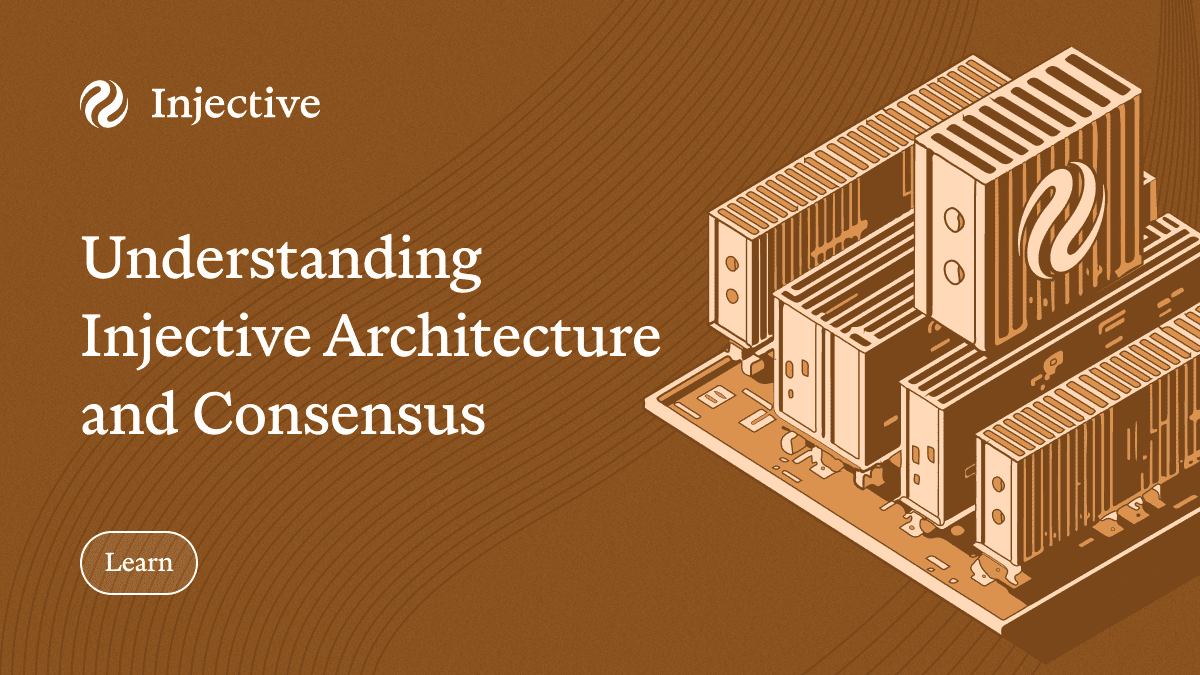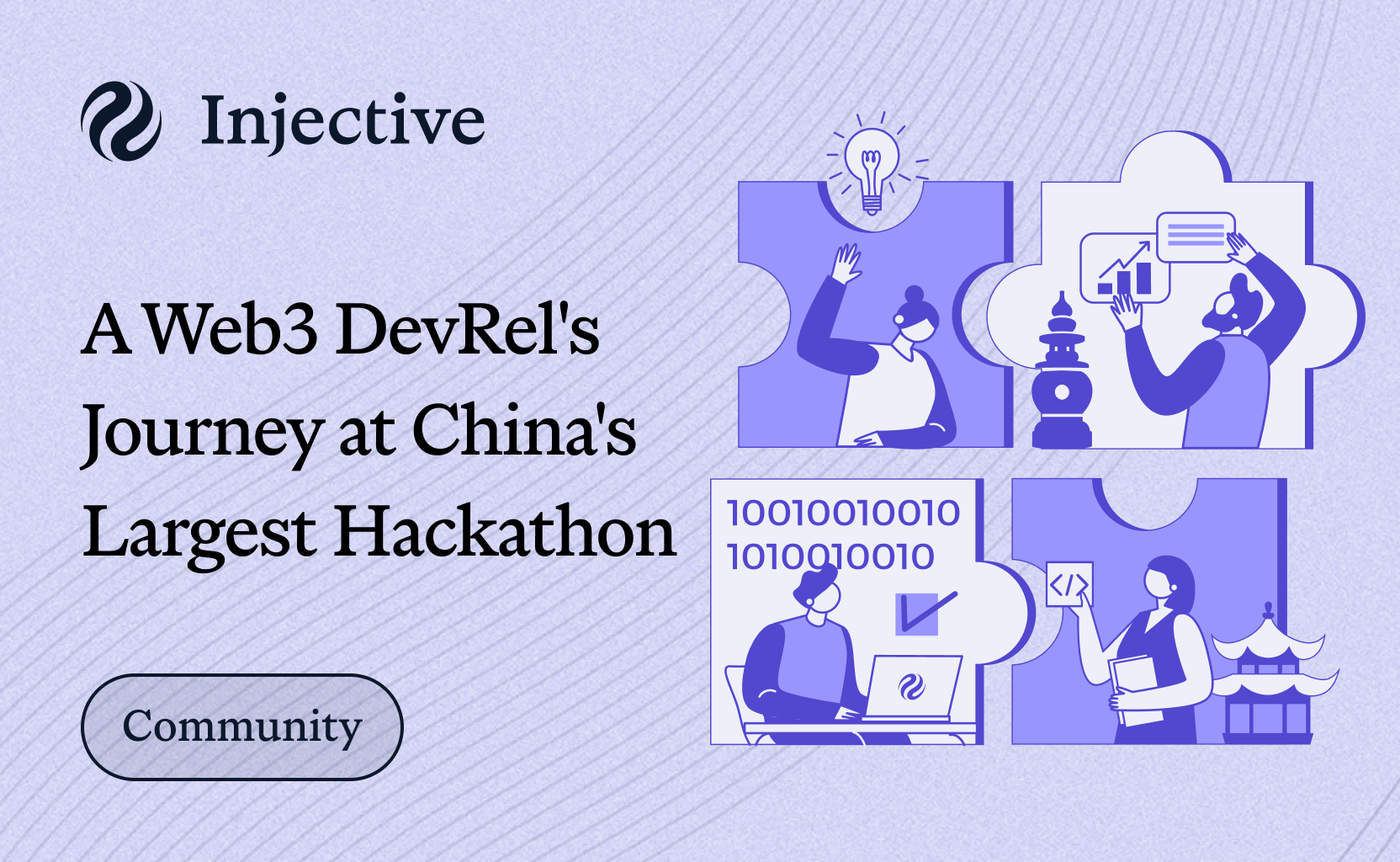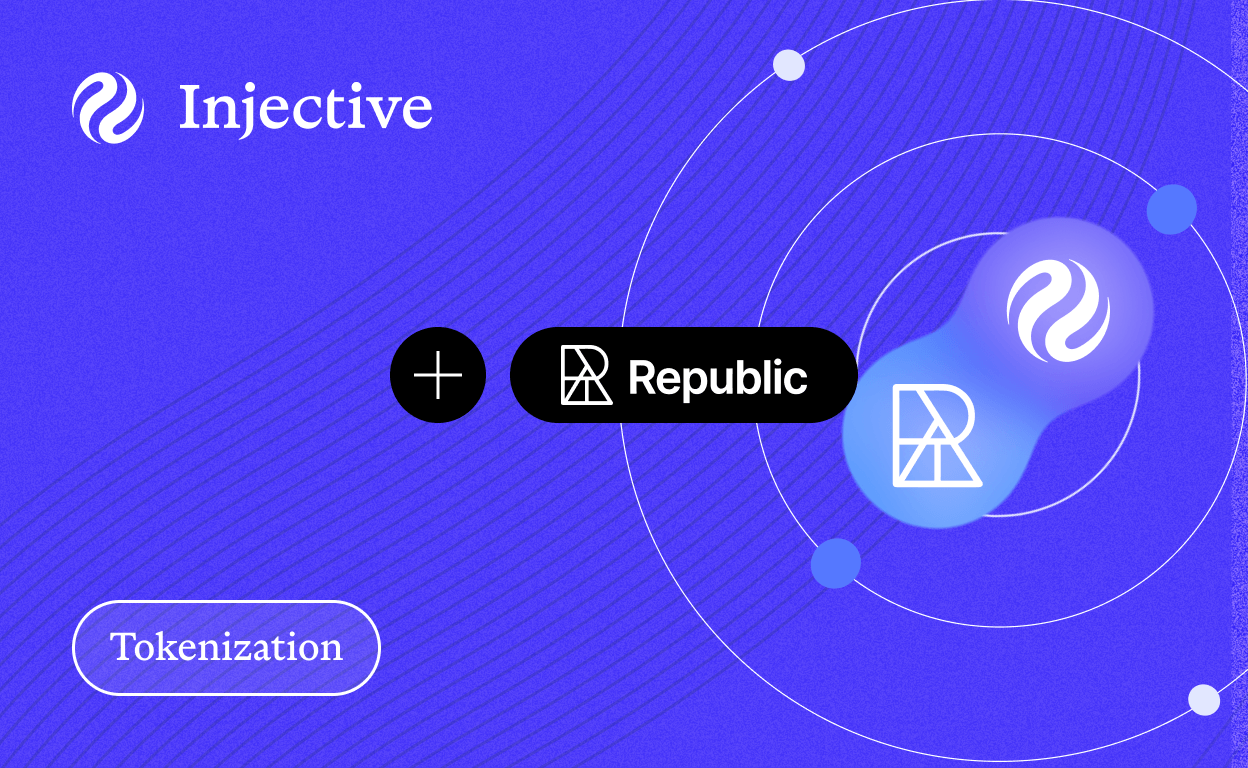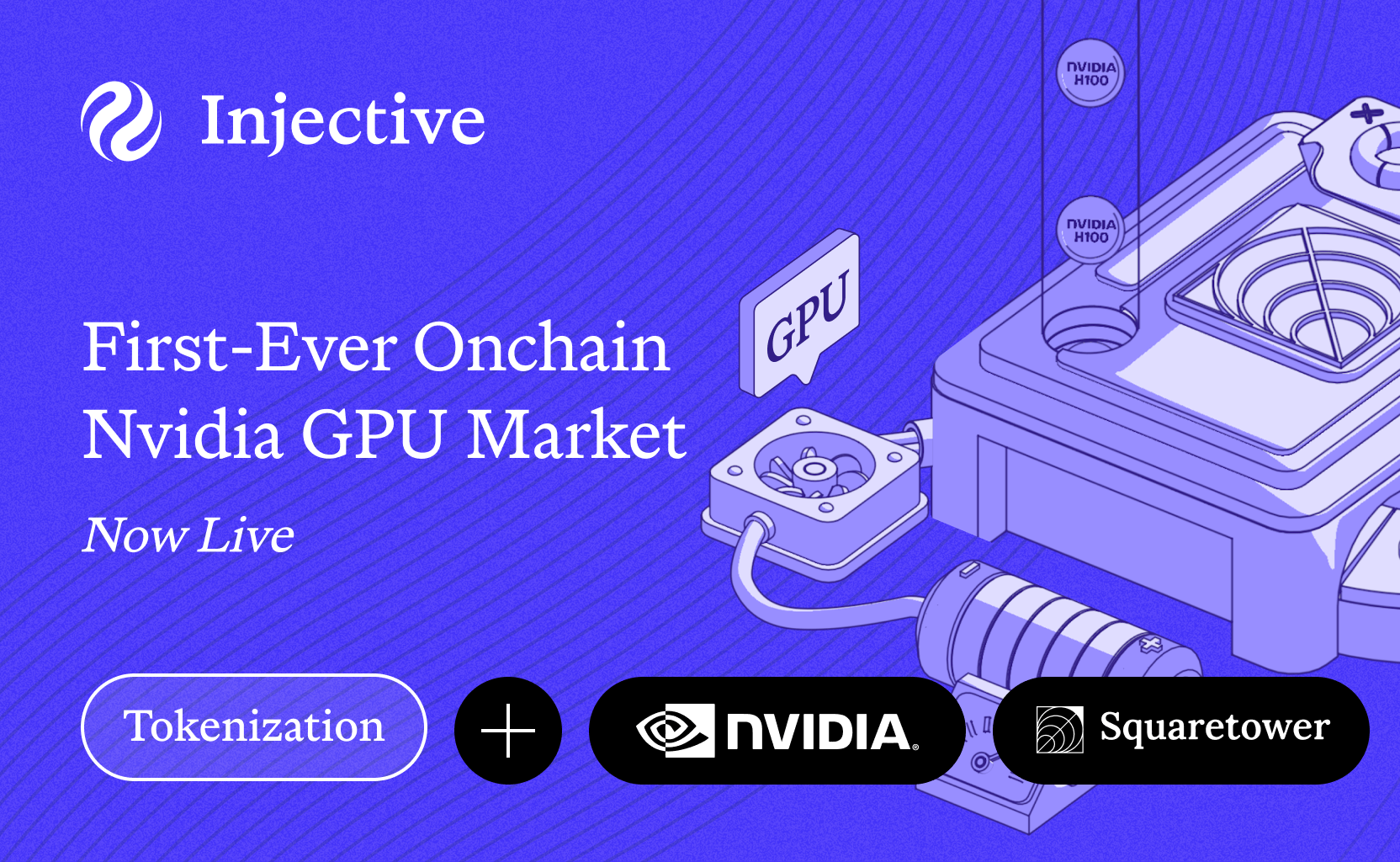Injective is a high-performance Layer-1 blockchain optimized for decentralized finance (DeFi) applications, featuring a robust architecture and consensus mechanism that ensure scalability, security, and interoperability.
Architecture Overview
To better understand the architecture of Injective, let's start from the basic layers. These layers define the basic abstract framework of the blockchain. They are:
- Application Layer: Handles business logic through customizable modules (e.g., staking, governance). Developers implement BaseApp to define transaction processing and state transitions.
- Consensus Layer: Powered by the Tendermint Core BFT consensus engine (with custom core implementation), providing Byzantine fault tolerance and instant finality. Interfaces via ABCI (Application Blockchain Interface) can provide interoperability for the blockchain.
- Networking Layer: Uses the P2P gossip protocol for block propagation and consensus message exchange. Validator direct peering reduces network latency.
Modules
In the context of the Injective blockchain, modules are distinct components that encapsulate specific functionalities, enabling a modular and extensible architecture.
Injective's architecture is meticulously designed to support a wide array of DeFi applications, including decentralized exchanges (DEXs), derivatives trading, and cross-chain asset transfers. Injective provides powerful and highly customizable modules for developers and users. Developers can build dApps with modules as tools out of the box. For example, the exchange module facilitates the development of decentralized trading platforms, while the oracle module provides reliable access to off-chain data. This modular approach accelerates development timelines and ensures application reliability and security. Additionally, Injective's integrated MultiVM environment will support both WASM, EVM and SVM, enabling developers to deploy smart contracts across multiple virtual machines seamlessly.
Notable modules include:
1. Exchange Module
- Fully on-chain orderbook DEX supporting spot, perpetuals, and futures.
- Diverse Market Support: Traders can engage in various markets, including:
- Derivative Markets: Such as perpetual swaps and futures.
- Spot Markets: For direct asset trading.
- Features:
- Maker/taker fee model (0% maker fees possible).
- Cross-chain margin trading (e.g., BTC from Bitcoin, ETH from Ethereum).
- Shared liquidity.
- MEV-resistant: Injective's orderbook employs Frequent Batch Auctions (FBA), processing all transactions within discrete intervals simultaneously at a uniform clearing price, effectively mitigating MEV exploits like front-running and sandwich attacks.
- Exchange Module Docs
2. Insurance Module
- This module provides insurance funds for derivative markets in the exchange module.
- Each derivative market can have its own dedicated insurance fund, created to cover losses when liquidated positions have negative equity.
- The insurance fund is utilized to cover the shortfall, ensuring that winning traders receive their due profits without disruption.
- Automatically compensates users during market black swan events.
- Insurance Module Docs
3. Oracle Module
- Injective’s default oracle option, enabling the seamless integration of real-world information into on-chain applications.
- Used to resolve prediction markets and parametric insurance claims.
- Oracle Module supports various oracle types.
- Oracle Module Docs
4. OCR Module
- The OCR (Off-Chain Reporting) Module in Injective is designed to integrate Chainlink's off-chain data into the Injective blockchain.
- Off-Chain data aggregation:
- There is a network of oracles, collecting data from various external sources and then storing them on-chain.
- Provides a means to communicate with Injective using sdk-go.
- OCR Module Docs
5. Peggy (Ethereum Bridge)
- This module enables the transfer of assets across different chains (Ethereum), enhancing Injective's cross-chain capabilities.
- Trustless bridge for ERC-20 ↔ Injective (CW-20) conversions.
- Supports cross-chain composability (e.g., Ethereum assets in Injective DeFi).
- Peggy Module Docs
6. Permissions (RWA) Module
- Governs access control for TokenFactory module.
- Allows whitelisting for features like token minting or contract execution.
- Used in institutional deployments for compliance (e.g., KYC checks).
- Permissions (RWA) Module Docs
7. Tokenfactory Module
- Enables permissionless token creation on Injective.
- Users mint fungible tokens with custom:
- Denominations (e.g., "factory/inj1.../mytoken").
- Metadata (name, symbol, decimals).
- No smart contract required.
- Tokenfactory Module Docs
8. Wasmx (CosmWasm) Module
- Automated smart contract execution.
- Features:
- Gasless transactions (sponsored by dApps).
- IBC-enabled cross-chain contracts.
- Pre-compiled DeFi logic (e.g., options pricing).
- WasmX Module Docs
9. Auction Module
- The Auction Module in Injective is a pivotal component designed to manage the protocol's Burn Auction mechanism, which plays a crucial role in the ecosystem's deflationary tokenomics.
- Features:
- Periodically, the module collects a basket of tokens from various sources, including trading fees from the Exchange Module and contributions from applications and individual users.
- The highest bidder wins the basket of tokens, and the INJ tokens used for the winning bid are subsequently burned, effectively reducing the total supply of INJ.
- Auction Module Docs
Consensus Mechanism
Injective employs Tendermint Consensus, a Byzantine Fault Tolerant (BFT) consensus algorithm designed for public or private blockchain networks, enabling secure and fast transaction finality. At its core, validators (participants who propose and validate blocks) take turns proposing blocks in a round-robin fashion. Each round has three phases: propose, pre-vote, and pre-commit, where validators cryptographically sign and broadcast votes to agree on the next block. The system tolerates up to one-third of malicious or faulty nodes, ensuring liveness and safety even if some validators act dishonestly. Unlike Proof-of-Work, Tendermint achieves energy efficiency with deterministic finality and no forks, making it ideal for applications requiring high throughput and real-time settlement. Its modularity via the ABCI allows developers to build custom applications (like DeFi) on top without modifying the consensus layer. Injective leverages Tendermint to balance decentralization, speed, and usability.
Key Features
- High Throughput: The network achieves near-instant finality with a block time of 0.65 seconds, processing up to 25,000 transactions per second (TPS).
- Decentralized Finance Support: Injective is ideal for DeFi applications, enabling decentralized exchanges and derivatives trading. With its decentralized order book, users have full control over their trades.
- Cross-Chain Interoperability: Through its bridging layer, Injective enables seamless asset transfers between Injective and other blockchains, enhancing liquidity and user experience. The Injective Bridge utilizes technologies like Peggy and IBC (Inter-Blockchain Communication) to facilitate these cross-chain interactions, allowing assets to move fluently between Injective and other blockchains (Solana, Ethereum, Polkadot, Cosmos etc).
Conclusion
Injective distinguishes itself in the blockchain landscape through its innovative architecture and strategic integrations, offering unique advantages over other chains:
- Advanced Exchange Infrastructure: Injective powers a fully decentralized, orderbook-based exchange infrastructure featuring advanced order types, liquidity incentives, and mechanisms to protect against miner extractable value (MEV). This design ensures a fair and efficient trading environment, setting it apart from other decentralized exchanges.
- Innovative Consensus Mechanism: Utilizing the enhanced Tendermint consensus mechanism(with customized core implementation), Injective achieves near-instant transaction finality and exceptional fault tolerance. This approach enhances security and performance, making it well-suited for high-frequency trading and complex financial applications.
By leveraging these advantages, Injective not only addresses common challenges in the blockchain space—such as scalability, interoperability, and security—but also provides a robust foundation for the development and deployment of next-generation decentralized financial applications.
About Injective
Injective is a lightning fast interoperable layer one blockchain optimized for building premier Web3 finance applications. Injective provides developers with powerful plug-and-play modules for creating unmatched dApps. INJ is the native asset that powers Injective and its rapidly growing ecosystem. Injective is incubated by Binance and is backed by prominent investors such as Jump Crypto, Pantera and Mark Cuban.
Website | Telegram | Discord | Blog | Twitter | Youtube | Facebook | LinkedIn | Reddit | Instagram | Orbit Newsletter



